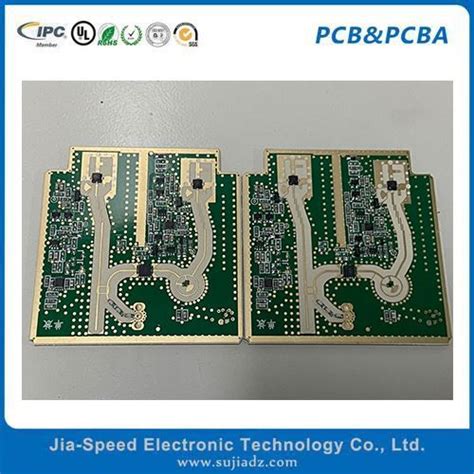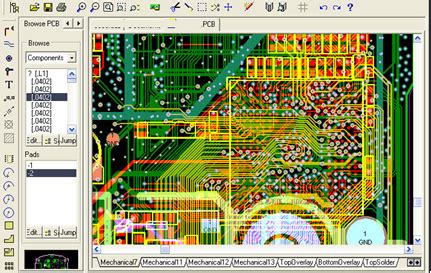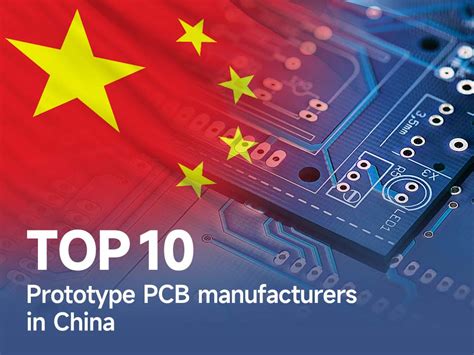Leading PCB Assembly Companies for Your Electronics Projects
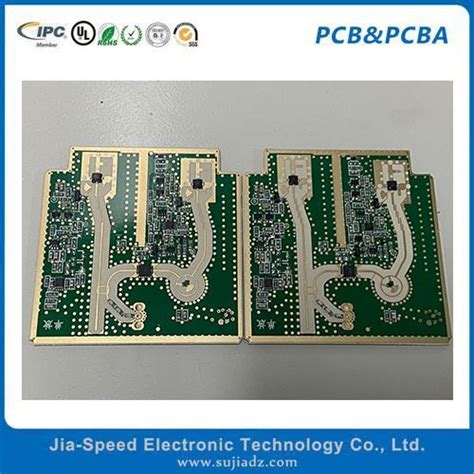
Key Takeaways
When selecting PCB assembly partners for electronics projects, prioritize companies with robust technical expertise, scalable manufacturing capabilities, and adherence to international quality standards. Key considerations include:
- Prototyping Speed: Look for providers offering rapid design-to-production cycles to accelerate innovation.
- Volume Flexibility: Ensure partners support both low-volume PCBA prototyping and high-volume production without compromising turnaround times.
- Advanced Technologies: Opt for firms proficient in HDI, flex, and rigid-flex PCB assembly to meet demands for compact, high-performance devices.
- Testing Protocols: Verify certifications like ISO 9001 and IPC-A-610 to guarantee reliability in sectors like medical devices or aerospace.
| Factor | Consideration |
|---|---|
| Prototyping Capabilities | Fast iteration, design validation, and DFM (Design for Manufacturing) feedback. |
| Volume Production | Scalable capacity, automated assembly lines, and cost-efficient material sourcing. |
| Technology Expertise | Experience with HDI, multilayer boards, and IoT-optimized designs. |
| Certifications | Compliance with UL, RoHS, and REACH standards for global markets. |
Cost-effectiveness remains critical, but avoid sacrificing quality for lower pricing. Partner with PCB assembly providers that offer transparent pricing models and collaborative project management tools to streamline communication. Finally, evaluate their supply chain resilience to mitigate risks in component shortages or geopolitical disruptions.
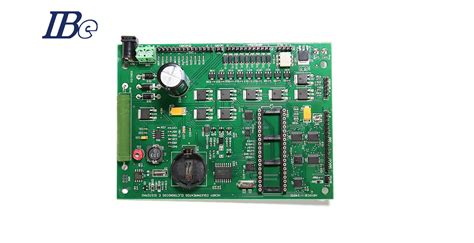
Introduction to PCB Assembly Services and Their Importance in Electronics
PCB assembly (PCBA) services form the backbone of modern electronics manufacturing, enabling the seamless integration of components onto printed circuit boards (PCBs) to create functional devices. These services are critical for industries ranging from consumer electronics to aerospace, as they ensure precision, reliability, and scalability in production. By partnering with specialized PCB assembly companies, businesses can leverage expertise in prototyping, high-volume manufacturing, and advanced technologies like HDI (High-Density Interconnect), flexible PCBs, and rigid-flex boards.
Tip: When selecting a PCBA provider, prioritize those offering comprehensive design-for-manufacturability (DFM) feedback. This collaboration minimizes errors and accelerates time-to-market.
The importance of PCB assembly lies in its ability to bridge design concepts with real-world applications. Prototyping services allow engineers to test and refine designs before committing to mass production, reducing costly revisions. For high-volume needs, scalable solutions ensure consistent quality while meeting tight deadlines. Advanced assembly techniques, such as automated pick-and-place systems and surface-mount technology (SMT), enhance precision and efficiency, particularly for complex, miniaturized components.
Quality assurance is another cornerstone of reputable PCB assembly companies. Rigorous testing protocols, including automated optical inspection (AOI) and X-ray inspection, ensure that every board meets industry standards. Additionally, adherence to certifications like ISO 9001 and IPC-A-610 underscores a commitment to reliability.
"Investing in a partner with robust quality control processes can significantly reduce long-term operational risks," notes an industry expert.
Ultimately, PCB assembly is not just about assembling components—it’s about enabling innovation through technical expertise, cutting-edge tools, and collaborative partnerships. Whether for prototyping or large-scale production, choosing the right PCBA provider ensures that your electronics projects achieve performance, durability, and cost-efficiency.
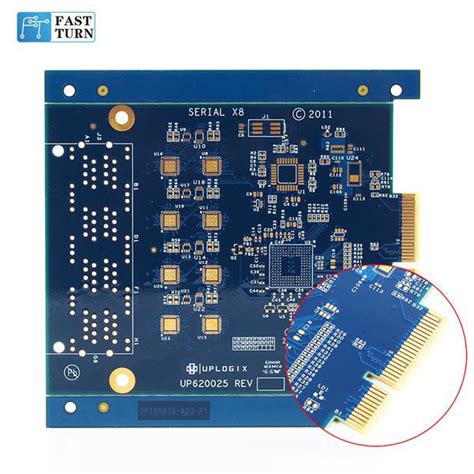
Key Factors to Consider When Choosing a PCB Assembly Partner
Selecting the right PCB assembly partner is critical to the success of your electronics projects. First, assess the company’s technical expertise in handling complex designs and advanced technologies like HDI (High-Density Interconnect) or rigid-flex PCBA. A provider’s ability to scale from prototyping to high-volume production ensures flexibility as your project evolves. Verify their certifications—such as ISO 9001 or IPC-A-610—to confirm adherence to global quality standards.
Material sourcing and supply chain resilience are equally vital. Partnering with a PCB assembly company that maintains robust relationships with component suppliers minimizes risks of delays, especially during shortages. Additionally, evaluate their testing protocols, including automated optical inspection (AOI) and functional testing, to ensure defect-free deliverables.
Cost transparency is another key factor. While competitive pricing matters, avoid compromising on quality for lower rates. Look for providers offering value-added services like design-for-manufacturability (DFM) feedback, which optimizes your design for efficient PCBA processes. Communication and responsiveness also play a role—opt for partners who provide clear timelines, real-time updates, and dedicated support.
Lastly, consider their experience in your industry. A PCB assembly specialist familiar with medical devices, automotive systems, or IoT applications will better navigate regulatory and technical challenges. By prioritizing these factors, you can align with a partner capable of delivering reliability, innovation, and scalability for your project’s lifecycle.
Top Global PCB Assembly Companies for Prototyping and Innovation
When it comes to electronics development, partnering with leading PCB assembly (PCBA) companies ensures access to cutting-edge prototyping and scalable manufacturing solutions. Firms like Jabil Inc., Sanmina Corporation, and Benchmark Electronics stand out for their ability to blend precision engineering with rapid prototyping, enabling businesses to iterate designs efficiently. These companies specialize in high-density interconnect (HDI) boards, flexible circuits, and rigid-flex PCBA, catering to industries ranging from aerospace to consumer electronics. For instance, Plexus Corp. excels in low-to-mid volume production with a focus on medical and industrial applications, while TT Electronics offers robust solutions for automotive and defense sectors, emphasizing reliability under extreme conditions.
Innovation-driven providers like Sierra Circuits and Advanced Circuits prioritize design-for-manufacturability (DFM) analysis, ensuring prototypes transition seamlessly to mass production. Their expertise in surface-mount technology (SMT) and mixed-technology assembly minimizes errors and accelerates time-to-market. Additionally, companies such as PCBWay and Seeed Studio cater to startups and hobbyists, offering affordable PCB assembly services without compromising on quality. These firms often provide online quoting tools and real-time project tracking, streamlining collaboration for global clients.
For projects demanding advanced capabilities, Celestica and Flex Ltd. leverage automated optical inspection (AOI) and 3D solder paste inspection (SPI) to maintain stringent quality standards. Their use of IoT-enabled manufacturing platforms ensures transparency and scalability, critical for innovation-heavy sectors like wearable tech and renewable energy. Meanwhile, Eurocircuits and MCL emphasize eco-friendly practices, incorporating lead-free soldering and recyclable materials to align with sustainability goals.
Choosing the right PCBA partner hinges on evaluating their technical expertise, prototyping speed, and adaptability to emerging technologies like 5G-compatible layouts or embedded systems. Leading companies differentiate themselves through end-to-end support, from PCB design optimization to post-production testing, ensuring every prototype meets functional and regulatory benchmarks. By aligning with innovators in PCB assembly, businesses can transform conceptual designs into market-ready products with unmatched precision.
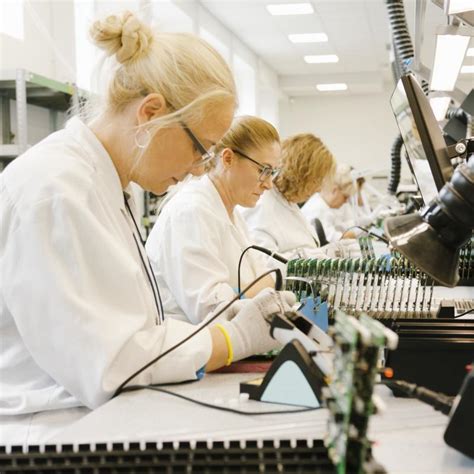
High-Volume PCB Assembly Solutions for Mass Production Needs
For electronics projects requiring large-scale manufacturing, partnering with PCB assembly companies that specialize in high-volume production is critical. These providers combine advanced automation, streamlined workflows, and rigorous quality controls to deliver consistent results across thousands or millions of units. PCBA services tailored for mass production prioritize efficiency, scalability, and cost optimization while maintaining compliance with industry standards such as ISO 9001 and IPC-A-610.
Leading manufacturers leverage automated pick-and-place systems, reflow soldering technologies, and AOI (Automated Optical Inspection) to ensure precision and minimize defects. For industries like automotive, consumer electronics, or medical devices, where reliability is non-negotiable, high-volume PCB assembly providers often integrate supply chain management solutions to secure component sourcing and mitigate delays. Additionally, flexible production lines allow rapid scaling to meet fluctuating demand without compromising turnaround times.
Cost-effectiveness remains a cornerstone of mass production. By optimizing material usage, reducing waste, and negotiating bulk pricing for components, PCB assembly companies help clients achieve economies of scale. Advanced providers also employ DFM (Design for Manufacturability) analysis to refine product designs early in the process, preventing costly revisions during full-scale production.
When selecting a partner for high-volume PCBA, prioritize firms with proven expertise in your industry, transparent communication channels, and robust testing protocols. Look for capabilities such as functional testing, in-circuit testing (ICT), and environmental stress screening to validate product performance under real-world conditions. By aligning with a trusted PCB assembly provider, businesses can ensure seamless transitions from prototyping to mass production, meeting global market demands with confidence.
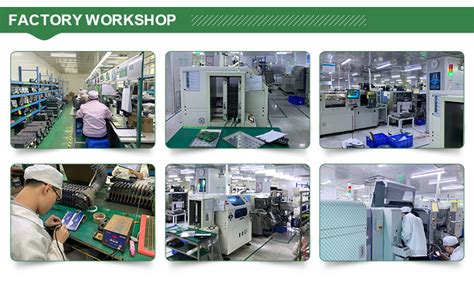
Advanced Technologies in Modern PCB Assembly: HDI, Flex, and Rigid-Flex
Modern PCB assembly processes are increasingly defined by cutting-edge technologies that cater to the evolving demands of compact, high-performance electronics. Among these innovations, High-Density Interconnect (HDI), Flex PCB, and Rigid-Flex PCB solutions stand out for their ability to address complex design challenges while enhancing functionality. HDI technology, for instance, enables the creation of densely packed circuits with finer traces and microvias, making it ideal for devices requiring miniaturization, such as smartphones, wearables, and IoT systems. This approach not only improves signal integrity but also supports high-speed applications by reducing electromagnetic interference.
Flex PCBs, constructed from flexible polyimide materials, offer unmatched adaptability for applications where space constraints or dynamic movement are critical. These boards are widely used in medical devices, automotive systems, and aerospace equipment, where their ability to bend or fold without compromising performance is invaluable. Meanwhile, Rigid-Flex PCBs combine the durability of rigid boards with the flexibility of their bendable counterparts, enabling seamless integration in complex assemblies. This hybrid technology eliminates the need for connectors and cables, reducing failure points and enhancing reliability in mission-critical environments like military hardware or industrial automation.
Leading PCBA providers leverage these technologies to deliver solutions tailored to prototyping and mass production. Advanced manufacturing techniques, such as laser drilling for HDI or precision lamination for Rigid-Flex, ensure consistent quality across batches. Additionally, innovations like embedded components and 3D printing are pushing the boundaries of what’s possible in PCB assembly, allowing for faster prototyping cycles and reduced time-to-market. As industries demand lighter, more durable, and energy-efficient electronics, partnering with a PCB assembly company proficient in these advanced methodologies becomes essential for achieving both technical and commercial success.
Quality Assurance and Testing Standards in PCB Manufacturing
Ensuring rigorous quality assurance and adherence to international testing standards is paramount in PCB assembly processes, as even minor defects can compromise the functionality of electronic devices. Leading PCBA providers implement multi-layered inspection protocols, including Automated Optical Inspection (AOI), X-ray inspection, and In-Circuit Testing (ICT), to detect issues like solder bridging, component misalignment, or micro-cracks. These methods are complemented by functional testing, where assembled boards undergo simulated real-world conditions to validate performance metrics such as signal integrity, thermal stability, and power efficiency.
Compliance with certifications like ISO 9001, IPC-A-610, and IATF 16949 reflects a manufacturer’s commitment to precision and reliability. For instance, the IPC-A-610 standard defines acceptability criteria for soldered connections, ensuring consistency across PCB assembly workflows. Advanced providers also leverage statistical process control (SPC) to monitor production trends, reducing variability and preempting potential failures.
High-quality PCBA services prioritize traceability, employing barcoding or RFID tagging to track components from procurement to final assembly. This is critical for industries like aerospace or medical devices, where material provenance and defect accountability are non-negotiable. Additionally, environmental stress screening (ESS)—including thermal cycling and vibration tests—helps identify latent defects before products reach the market.
By integrating these practices, top-tier PCB assembly companies minimize risks, enhance product longevity, and align with global regulatory requirements, making them indispensable partners for mission-critical electronics projects.
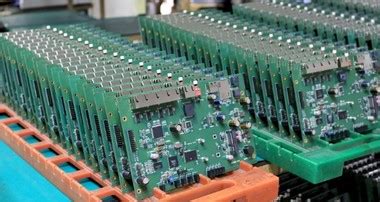
Cost-Effective PCB Assembly Services Without Compromising Quality
Balancing affordability and quality in PCB assembly is critical for electronics projects, whether for prototyping or large-scale production. Leading PCBA providers leverage economies of scale, optimized supply chains, and advanced manufacturing techniques to deliver cost-effective solutions without cutting corners. For instance, companies specializing in high-volume PCB assembly often offer tiered pricing models, reducing per-unit costs as order quantities increase. This approach ensures that startups and enterprises alike can access competitive rates while maintaining rigorous quality standards.
Modern PCB assembly workflows integrate automation and precision equipment to minimize errors and material waste, further driving down expenses. Technologies like surface-mount technology (SMT) and automated optical inspection (AOI) enable faster turnaround times and consistent output, even for complex designs such as HDI or rigid-flex PCBs. Many providers also offer design-for-manufacturability (DFM) feedback, helping clients refine layouts to avoid costly revisions during production.
To ensure affordability aligns with reliability, top PCBA partners adopt stringent quality assurance protocols, including in-circuit testing (ICT) and functional testing, to identify defects early. Additionally, strategic sourcing of components from certified suppliers helps mitigate supply chain risks and cost fluctuations. Some companies even provide value-added services like component procurement, inventory management, and conformal coating, streamlining the entire process for clients.
For projects requiring scalability, partnering with a PCB assembly provider that offers flexible production capacities—from low-volume prototyping to mass production—ensures seamless transitions as demand grows. By prioritizing transparency in pricing and maintaining certifications like ISO 9001 and IPC-A-610, these providers demonstrate their commitment to delivering high-quality, cost-efficient solutions. Ultimately, the right PCBA partner empowers businesses to innovate while staying within budget, proving that affordability and excellence in electronics manufacturing are not mutually exclusive.
How to Collaborate Effectively with PCB Assembly Providers for Optimal Results
Successful collaboration with PCB assembly providers hinges on clear communication, alignment of expectations, and leveraging their technical expertise. Begin by establishing a detailed project brief that outlines your requirements, including design specifications, material preferences, and timelines. Sharing comprehensive design files (e.g., Gerber files, BOMs, and assembly drawings) ensures accuracy during the PCBA process. Engage early with your partner to discuss design for manufacturability (DFM) feedback, which helps identify potential production challenges and reduces costly revisions.
Regular progress updates and milestone reviews foster transparency, enabling timely adjustments if project scopes evolve. For complex projects, consider involving the provider’s engineering team in prototyping phases to validate designs before scaling to mass production. Emphasize quality control by aligning on testing protocols—such as automated optical inspection (AOI), X-ray inspection, or functional testing—to ensure consistency across batches.
Cost optimization can be achieved through bulk material procurement or flexible production scheduling, but avoid compromising on critical components or processes. Finally, build a long-term partnership by providing feedback and acknowledging successes, which strengthens trust and encourages proactive problem-solving. By integrating your provider’s PCB assembly capabilities into your workflow, you streamline production cycles and enhance the reliability of your electronics projects.
Conclusion
Selecting the right PCB assembly partner is critical to the success of your electronics projects, as it directly impacts product quality, scalability, and time-to-market. Leading PCBA providers combine technical expertise, advanced manufacturing capabilities, and rigorous quality assurance processes to deliver solutions tailored to diverse needs—from rapid prototyping to high-volume production. Companies specializing in HDI, flex, and rigid-flex technologies enable innovation in compact and complex designs, while adherence to international standards like IPC-A-610 and ISO 9001 ensures reliability across industries. For cost-sensitive projects, many firms offer value engineering and optimized supply chain strategies without compromising on performance. Effective collaboration with PCB assembly partners requires clear communication of design specifications, timelines, and testing requirements, fostering a seamless workflow from concept to final product. By prioritizing transparency, flexibility, and technological agility, businesses can leverage PCBA services to stay competitive in fast-evolving markets. Whether developing cutting-edge IoT devices or industrial automation systems, partnering with a trusted PCB assembly company ensures your projects are built to last, perform, and adapt to future demands.
FAQs
What factors should I consider when choosing a PCB assembly partner?
Key factors include expertise in PCBA technologies, scalability for prototyping or mass production, adherence to quality assurance standards, certifications (e.g., ISO, IPC), and transparency in pricing. A partner’s ability to handle HDI, flex, or rigid-flex PCBs is also critical for advanced projects.
How do PCB assembly companies ensure quality in manufacturing?
Reputable providers implement rigorous testing protocols, such as automated optical inspection (AOI), X-ray inspection, and functional testing. They adhere to industry standards like IPC-A-610 and employ traceability systems to monitor every stage of the PCBA process.
What is the typical turnaround time for PCB assembly projects?
Turnaround varies based on project complexity. Prototyping may take 3–7 days, while high-volume production could require 2–4 weeks. Many companies offer expedited services for urgent needs, though costs may increase.
Can PCB assembly services support both small and large production runs?
Yes. Leading providers specialize in low-volume prototyping for validation and high-volume manufacturing for scalability. Flexible PCBA solutions ensure cost-efficiency regardless of batch size.
What advanced technologies are shaping modern PCB assembly?
Innovations like HDI (high-density interconnect), flexible PCBs, and rigid-flex designs are transforming electronics. These technologies enable miniaturization, improved performance, and durability, particularly in industries like medical devices and aerospace.
How do I balance cost and quality in PCB assembly?
Opt for providers that offer transparent pricing models, volume discounts, and design-for-manufacturability (DFM) feedback. Prioritize quality assurance practices to avoid costly rework, even when selecting budget-friendly services.
Ready to Start Your Project?
Click here to explore tailored PCB assembly solutions from a trusted global partner. Whether you need prototyping or mass production, get expert support for your next electronics innovation.

